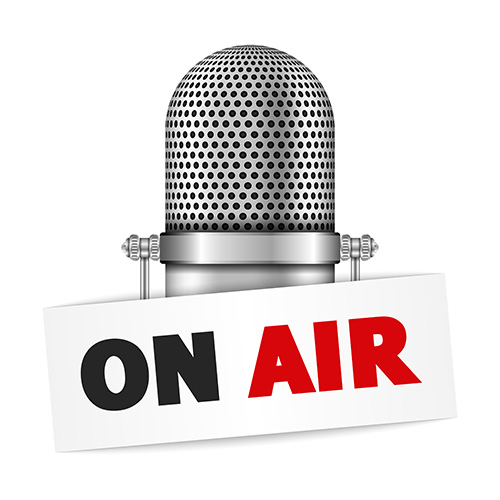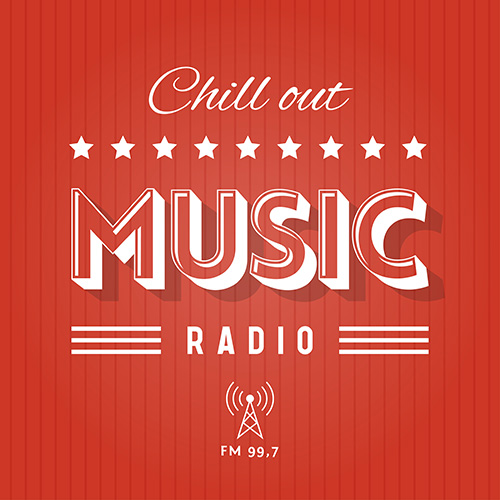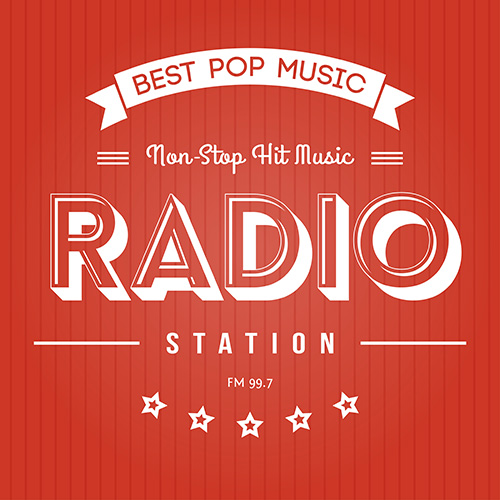Chapter 15:How to get radio airplay
When somebody writes a song that they have invested a lot of time and effort into, the next thing that they will want to do when it is finished is get out onto a public platform in order for other people to hear it.
Getting your song played on the radio is a means of boosting your career and generating meaningful awareness of who you are; the reason radio is so powerful is because the DJ and program directors can play whatever track that they want to their existing audience; the listeners have very little control over what they are listening to, making DJs extremely influential figures in pushing music in front of listeners on a large scale. In the main, large radio stations tend to have large followers, meaning that when a song is played on well known radio stations, it reaches a vast audience.
Because radio is the so useful to artists, unsurprisingly, everybody under the musical radar wants in. The scrap to get to the top of the pile can be brutal as there is only so much airtime that is physically available – not everybody will get their 5 minutes of fame.
However, whilst it is hard to get noticed, it is not impossible and artists should never give up the fight of winning some airtime. Once they have been played once, it is likely that will be played again and one play can create a ripple effect of people hearing your track. There’s no disputing that it works, but how can you get it to work for you?
Firstly, let’s address the two types of radio that are out there:

Non–Commercial radio
Non–commercial radio is exactly what it says on the tin: radio stations that are not littered with adverts. These stations are usually ran by students who are looking at making their mark on the music industry when they graduate and are using the non commercial station as a way of gaining experience.
As a rule of thumb, it is more than likely that non–commercial radio won’t carry adverts, however, if they do, they won’t be in blocks like they are on commercial radio and they won’t be anywhere near as frequent.
But where do they get their funding to broadcast? Many non–commercial radio stations are often funded by anonymous sources, meaning that the station itself is not under massive pressure to gain ratings in order to gain revenue from advertising. This makes non–commercial radio very genuine and more willing to take chances on new artists that nobody has ever heard of.

Commercial Radio
Commercial radio is the opposite of non–commercial radio as quite simply, it carries advertising and commercials. Revenue is generated to make profit and keep the station broadcasting from the fees that advertisers pay to use the station to market their business.
In order to secure this revenue and attract businesses to advertise, commercial radio relies solely on ratings; it is essential that they pull in large numbers of listeners on a consistent basis in order to entice companies to part with their cold hard cash. By having a large amount of listeners, businesses will want to invest in advertising via a reach that covers a large demography – if these ratings drop, then so does the price of advertising, meaning less profit for the station.
Due to the heavy reliance on sheer volume of listeners, commercial radio isn’t as flexible when it comes to playing new music from unknown artists. As a station, they need to play the tracks that people want to hear, which is in the main chart music that everybody knows. The artists that get the most airtime are the ones at the top of the pecking order; the household names that people recognise instantly and the ones who are a stellar brand that sells and attracts people.
Getting some airplay…
Start off small
It’s understandable that you’d want to hear your music blasting out the speakers on channels such as Radio One, but that isn’t going to happen straight away. The radio industry is a game of hierarchy and you need to work your way up in order for the commercial radios with the biggest listener numbers to take notice and want to play your music.
Do some research and find out what smaller, non–commercial stations out there thrive off new artists and are all too keen to promote their music. As previously mentioned, these stations don’t rely on revenue from advertising, so they don’t need to create gargantuan listener figures by only exclusively playing big name artists; they don’t have to bow down to the consumerism that filters through on commercial radio and they can make their own rules.
However, just because the aim of the game for non commercial stations isn’t listener figures, this doesn’t mean that they don’t attract listeners; many people flock to non commercial stations to get away from the mainstream playlists and masses of advertising on the big name radio stations. This type of listener is the most important, as they are actively seeking something out as opposed to absent–mindedly listening to music; these listeners are more likely to invest in an artist that they like and it’s important to grab their attention.
Many non–commercial radio stations have segments specifically geared towards unsigned acts, so they will actively seek out the artists who are looking for recognition meaning that you don’t have to beg and plead to convince them to play your music because that’s just what they are looking for. Also, as a bonus, the people who run these shows tend to be people who are part of the industry as a whole and could possibly help you to get your foot in the door in other areas.
When approaching stations, ensure that all information that you hand over is bang up to date, including your social media outlets – they will check you out. Tell them about up and coming gigs that you have and make sure that your bio promotes you in the best possible light without being cliché.

Going for the big guns
The move into bigger radio stations isn’t just a clear jump from non–commercial to the big commercial main players; you are still working your way up so start with the smaller commercial stations and add to your radio foundations.
Getting a good level of play on non–commercial radio will hold you in good stead with the smaller commercial stations and so on and so forth. This isn’t a process that will happen over night; it will take time and you will have to invest in all aspects of your career as a whole in order for producers and DJs to show an interest.
Once you have moved into the commercial arena, you will be analysed on just what goods you can bring to the table. You have to be able to attract listeners just like the other artists who are played on the station can, because once you are considered for commercial radio, producers and programmers will be looking at how you can increase their ratings. If they don’t think you can, they won’t play, so make sure that your career moves at a steady pace and doesn’t come to a stalemate. Just because you have been played on non–commercial radio doesn’t mean that you automatically qualify for airtime with the popular stations.
When you are at the point of working with commercial radio stations, you should be at a pivotal position in your career that sees you performing at more gigs, gaining more recognition from both the fans and the press and generating more sales of your music. In short, some of their listeners must know who you are in order for you to be considered. Don’t forget, you aren’t just up against British artists; you are also up against big international name from across the pond.

Setting up a campaign
Your radio campaign is applicable to all levels of radio, whether you are aiming for non–commercial or commercial. Whilst many people approach non commercial radio in a laid back manner, it is preferable to treat them with the same standing as a commercial radio and make your campaign as glossy and professional from the get to – this gives you necessary experience when it comes to approaching the larger stations.
Gather your contacts
In commercial radio, the DJ isn’t necessarily the person who chooses the songs; this is the job of the music director. Find out the names of the music directors and producers at radio stations and get their contact details – these are the people that you need to impress.
It doesn’t hurt to contact DJs as some do tend to have some sway on what they play and they can always sing your praises to the directors if they like your material, so don’t be scared to contact them, too.
In regards to non–commercial radio, the DJ tends to have a lot of creative control over what they play and as it isn’t a big corporate company, contacting them directly is usually the way to go.

Make your press packs and samples look professional
There is no other way of putting this: your press packs are a reflection on you as an artist, if they look rubbish, people will think you are sloppy. If you are unsigned you need to approach contacting radio stations as if you are a record company representing somebody else; look at it from an outsider perspective and think about what you would like to see if you were sent material about a new artist.
Create press packs that look professional and sleek; your CD samples should labelled appropriately; as a promotional copy this is not for sale. Work out when you want your track to go live on air and give yourself around 5–6 weeks beforehand to promote the release, with the view to get your CD in front of the music directors at companies in the first week of your campaign.
Once you have sent out your packs with your CDs, give it about a week before you touch base again; radio programmers are extremely busy and it is better to give them time as opposed to applying pressure.
Ask for feedback and don’t be scared to be upfront in asking if it is something that they can see themselves playing.
Money can be scarce when you aren’t generating a massive income as an artist who is just starting off, but sometimes you have to speculate to accumulate and if you have faith in your latest release, get some paid advertising on the go.
Make sure that throughout the process you are staying in touch with figureheads at the station to inform them where you are up to and how you are getting on with your sales and pre–hype; they need to see that you mean business and you aren’t just an artist who is going to go away anytime soon.
In the final week, do your follow ups and see where you stand on getting some airtime; every time that you release a new track you need to repeat this process – even professional radio pluggers will be expected to run clearly constructed campaigns to get the biggest names on the bill.
However, switch it around and use it to your advantage; this is a time that you can use to show off who you are and get the important people to buy into you and your brand. Be polite, be genuine and make yourself likeable. By doing so, you are making life easier for yourself down the line and stations will be more inclined to try and help you do well, hopefully actively playing a part in a modicum of your success.
- Contents
Introduction to the Guide - Chapter 1:
What is Music PR? - Chapter 2:
Writing Great Music - Chapter 3:
Basic Recording Studio Set Up - Chapter 4:
How Loops and Samples can help you make your music - Chapter 5:
How to get an online presence - Chapter 6:
The importance of social networking and keeping accounts updated - Chapter 7:
How to decide on an image/style for your band or as an artist - Chapter 8:
The importance of consistency and uniformity within your brand
- Chapter 9:
Registering your music with PRS/PPL – Why? - Chapter 10:
What is music publishing? - Chapter 11:
What are ISRC Codes / Barcodes? - Chapter 12:
Why it is important to network with your music contacts - Chapter 13:
How to write a music press release - Chapter 14:
How to get music reviews - Chapter 15:
How to get radio airplay - Chapter 16:
Finding music bloggers in your genre - Chapter 17:
Why are music bloggers important?
- Chapter 18:
How to find gigs - Chapter 19:
How to set up a band tour - Chapter 20:
Merchandising - Chapter 21:
Promote your music and make money on YouTube - Chapter 22:
What is Sync Licensing? - Chapter 23:
Why are chart positions so important? - Chapter 24:
Why should you have multiple remixes of a dance track? - Chapter 25:
Search Marketing and Music PR - Chapter 26:
Music distribution